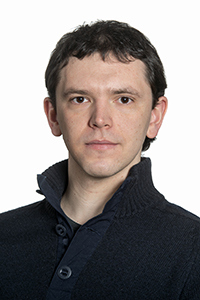Li Guo
Associate Professor Senior Lecturer
Faculty of Textiles, Engineering and Business (including The Swedish School of Textiles)
— Department of Textile Technology
My main research areas are within smart textiles, which is a vast field that encompasses everything from fibres to fabrics to final products, like garments. My area has been primarily focused on fabric construction, in particular knitting, where I see the advantage of seamless integration of e.g. sensing and actuating functions into fabrics. I have come to conclude that my research methodology can be described as “engineering design,” which involves applying engineering principles to the design and development of new products, systems, and technologies. Using this methodology, my research can be described using the following themes:
Textile-Based Sensors for Recording and Stimulation
How to use textiles themselves as sensors and how to integrate sensing functions into textile structures are the research questions here. My research philosophy has always been centred around the idea of “seamless integration,” with mass-production always being at the forefront of my mind. In 2017, I developed a “textrode-band” which is a knitted band that includes 16 electrodes for sEMG recording. The entire piece was produced in a single process using an industrial knitting machine. Later, in 2019, I developed a compression stocking that includes 36 electrodes for electrode muscle stimulation. The band has been utilised for phantom limb pain (PLP) relief, and the sock has been tested in a study for prevention of deep vein thrombosis (DVT). Both led me to explore my second research theme, which focuses on developing smart textiles for healthcare applications.
Smart Textiles for Medical and Healthcare Purposes
The two grants received from the Knowledge Foundations (Scan-to-Knit, 2016-2019 and NeuRehab@Home, 2019-2023) allowed me to develop a smart textile platform for PLP treatment, which has shown it potential to be used in other rehabilitation applications. Since 2020, I have worked in two projects with Karolinska University Hospital (IQ-sock, VINNNOVA; Lisa, Kamprad Family Foundation), where the textile sensors are used as stimulation sensors. In all the above-mentioned projects, user compliance has been a main focus of the research. What I believed and still believe is that textiles/smart textiles are a “game-changer” when it comes to comfort and usability and that they can and will facilitate “home-based” and “user self-administered” advantages in various healthcare settings. Currently, I am assistant supervisor to a doctoral student (Yohann Opolka) in a project related to the Lisa project.
Textile Actuators
My exploration of textile actuators began with my involvement in two Horizon 2020 projects SUITCEYES (2018-2021) and WEAFING (2019-2022). One of the main challenges in this field is how to seamlessly integrate actuators into textile structures, and I have applied the “engineering design” methodology to tackle this challenge. In the SUITCEYES project, my main task was to develop garments that can host various types of actuators and sensors, while in the WEAFING project, we took it a step further by developing soft actuators and integrating them into textile structures. I have made significant contributions to these projects on various levels, including in experimental design, prototype development, leading the data workgroup (SUITCEYES, 2019), and as work package leader (WEAFING, 2023). I am also assistant supervisor to Carin Backe, associated with the WEAFING project.
Assistant Supervisor for the following doctoral students
Carin Backe
Research Engineer
033-435 4225

Yohann Opolka
Doctoral Student
033-435 4313

Shamima Sarker
Doctoral Student
033-435 4714



